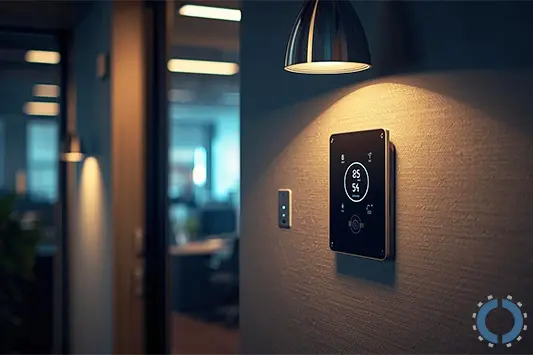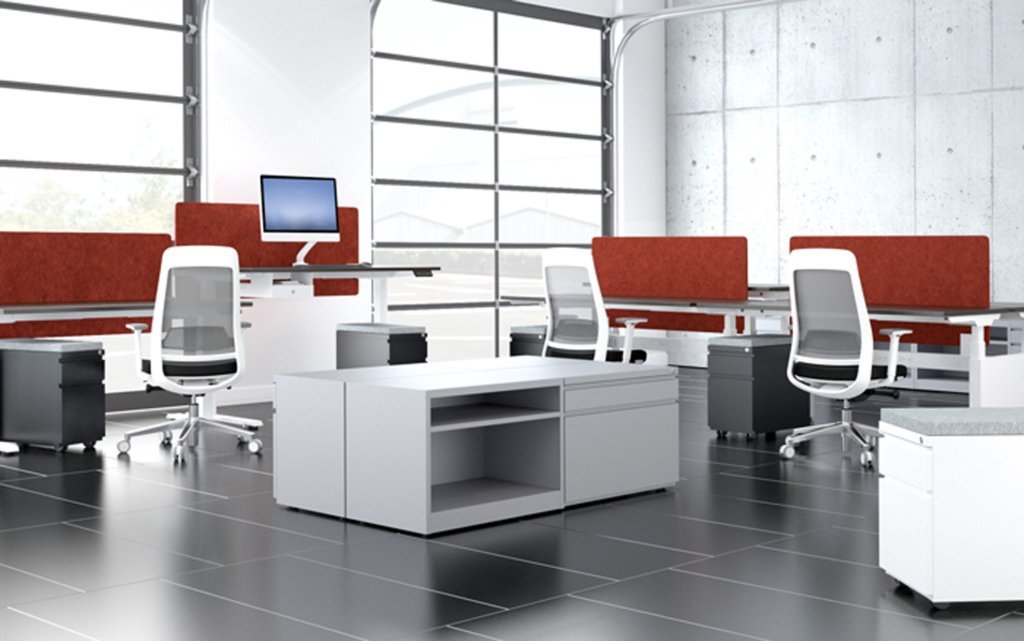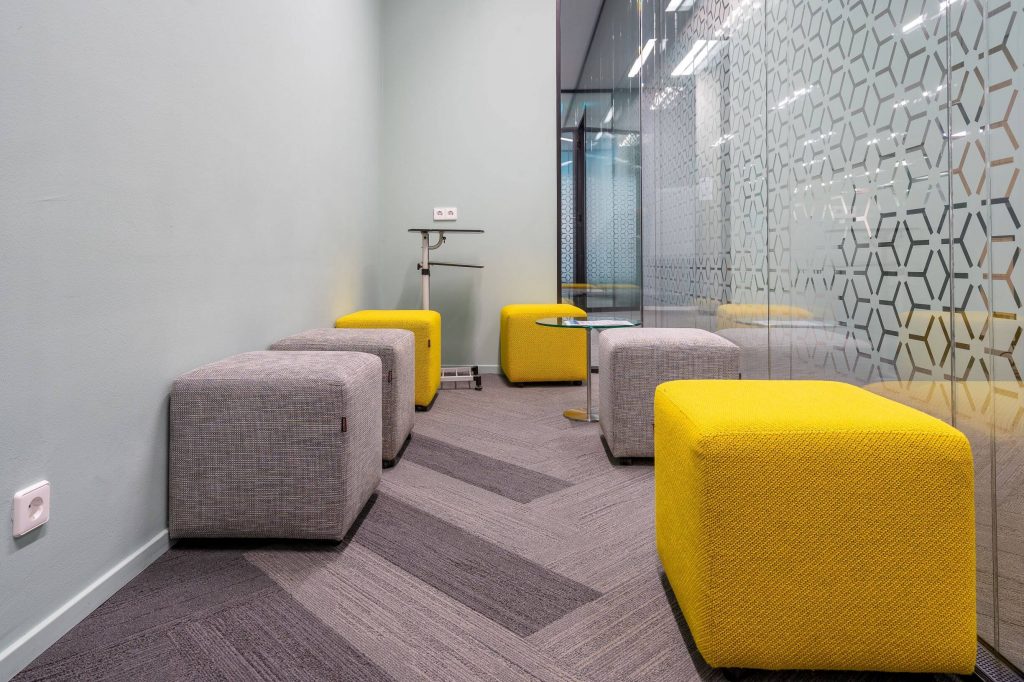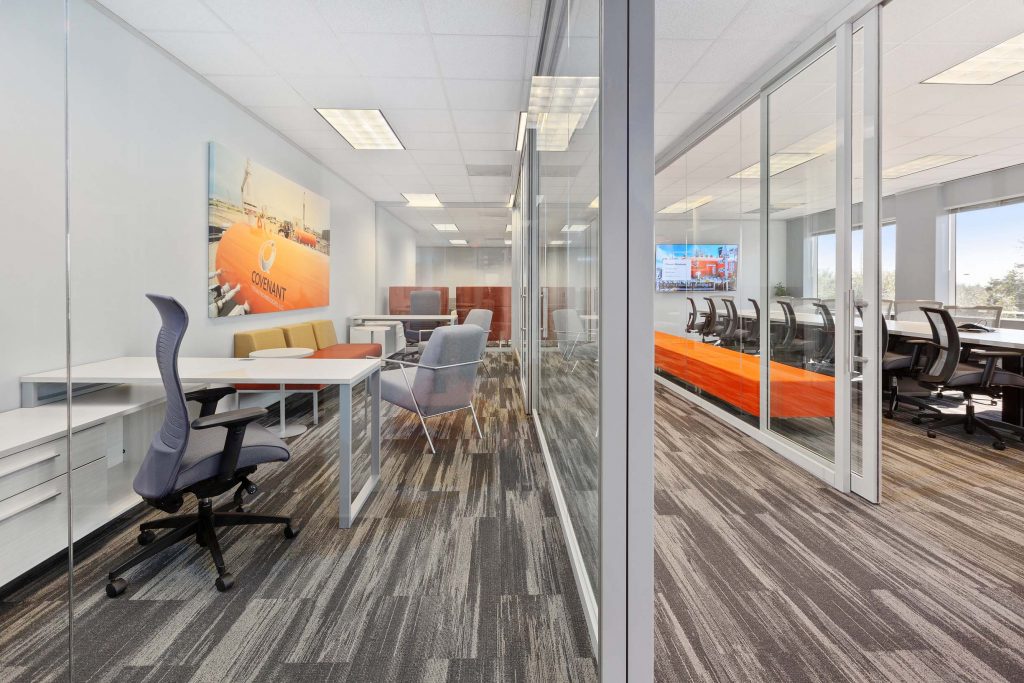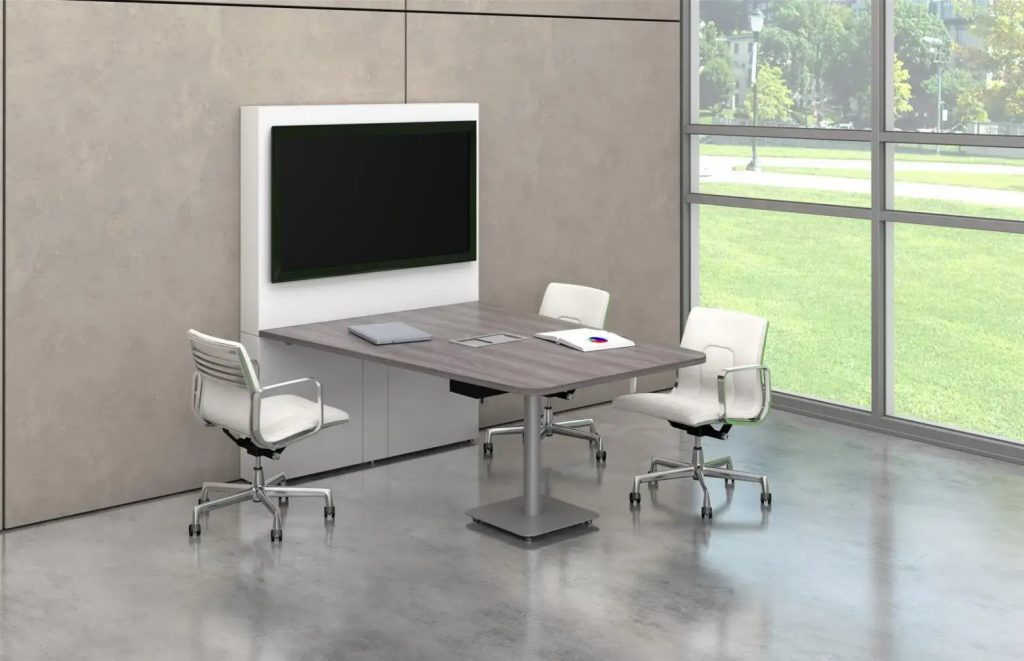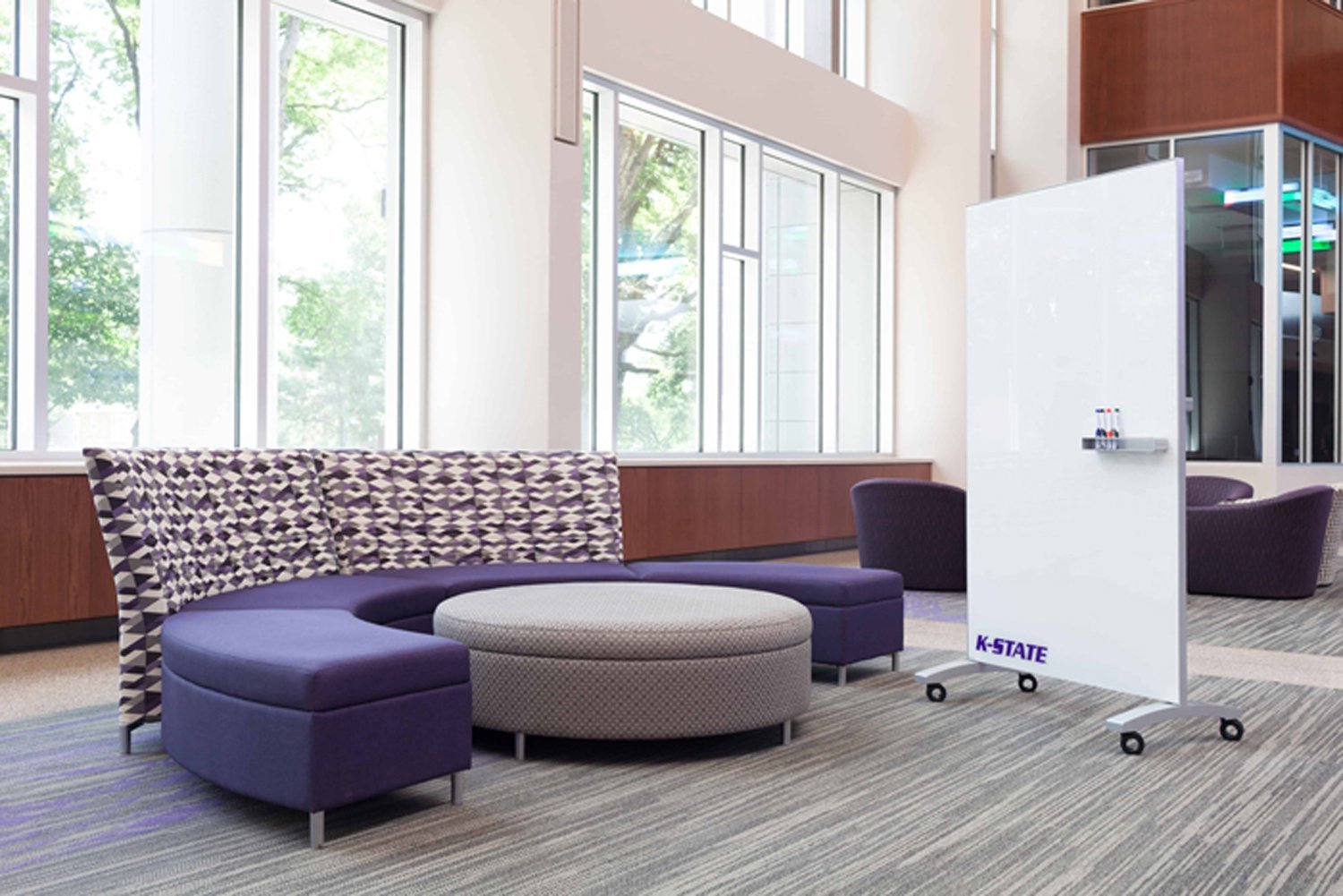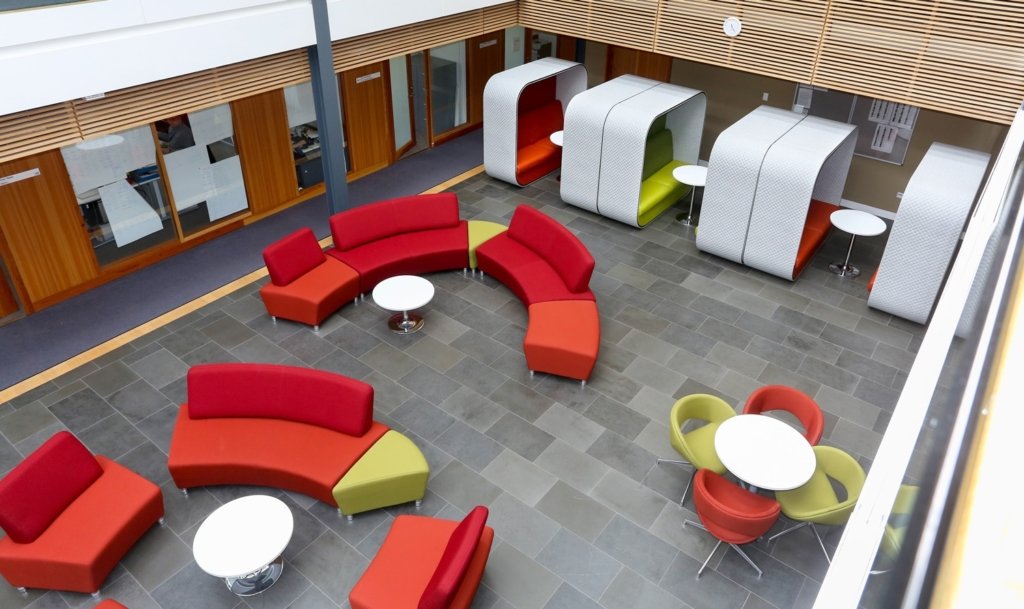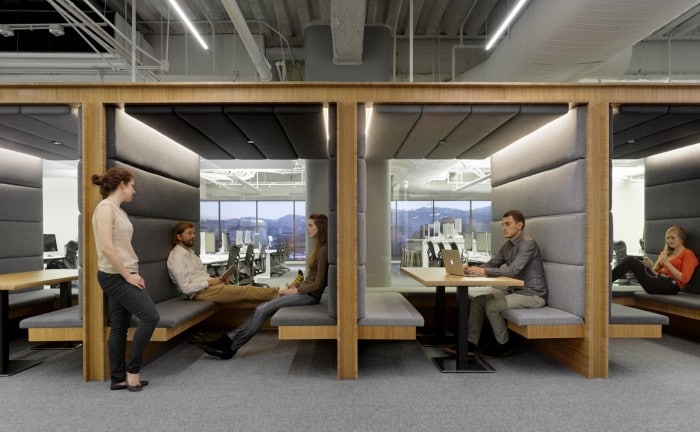How to Design Your Office to Boost Productivity?

Can your office design have a significant impact on your employee productivity? Absolutely!
Did you know that poor workplace design can reduce employee productivity by up to 20%?
But the question is: How to Design Your Office to boost Productivity?
To boost productivity in your office space, focus on ergonomic office furniture, natural light, and biophilic elements, create quiet zones for focus and open areas for collaboration, keep layouts clutter-free, and integrate tech-friendly setups to support seamless work.
However, many companies and businesses still focus more on visual aesthetics in their office design than on efficiency and employee comfort.
The result of this design is offices that may look beautiful but, in practice, cause fatigue, distraction, and reduced productivity.
In this article, we aim to guide you step by step, based on scientific principles and real-world experiences, on how to design your office in a way that is both aesthetically pleasing and enhances employee productivity, motivation, and focus.
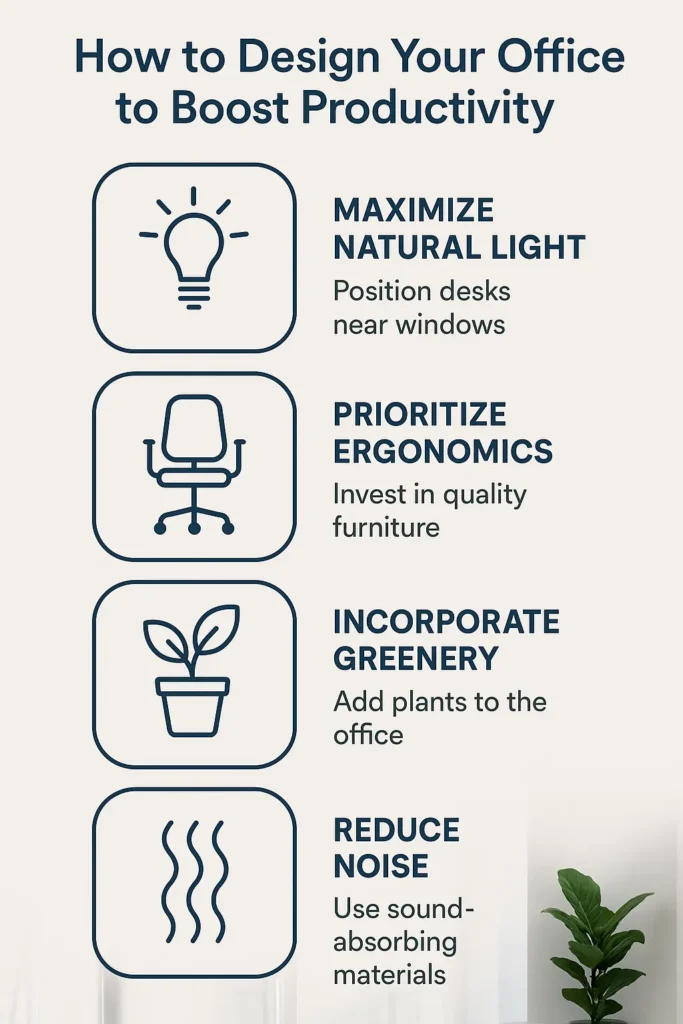
Why Office Design Matters for Productivity
1. Psychological and Physiological Effects of Workspace Design
The design of the office space directly affects the psychology and physiology of employees.
For example, research has shown that environments with natural light can improve employee focus and morale.
On the other hand, choosing the right colors also plays a vital role in office design.
Also, the type of office layout, such as open space or private space, has a big impact on how employees feel.
2. The Cost of Poor Design
Poor and inappropriate office design can lead to high costs for organizations.
One of the major problems with poor designs is the waste of time, which can lead to reduced productivity.
Additionally, stress is another consequence of poor design.
Crowded and noisy spaces, poor lighting, and inappropriate layouts can increase stress levels and reduce people’s concentration.
Ultimately, these factors cause employee dissatisfaction, reduced productivity, and even job abandonment.
You Might Also Enjoy: Where Can I Find the Largest Selection of Office Furniture
Top 8 Office Design Tips to Boost Productivity
1. Maximize Natural Light and Use Lighting Strategy
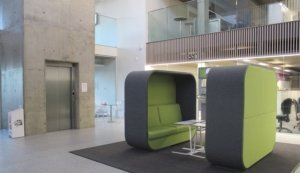
One of the important tips to boost office design productivity is the use of natural light.
Research has shown that exposure to natural light helps regulate the body’s biological clock, improving sleep quality, increasing energy, and reducing feelings of fatigue.
Additionally, natural light increases focus and attention in work environments.
Employees in spaces with natural light can work more efficiently, and their stress levels are reduced.
That’s why many successful offices use large windows to allow their employees to take advantage of natural light.
Natural light also has a positive effect on people’s mood, reducing stress and increasing feelings of cheerfulness and motivation.
Now you can combine natural and artificial light to have a productive workspace.
Natural light should be used as the main source in work environments, but artificial light should also be used to compensate for its limitations during certain hours of the day or weather conditions.
For example, in spaces that do not have access to natural light, LED lamps with a color temperature similar to daylight can be used to maintain a natural feel to the environment.
In office design, using adjustable lights that change the amount of light based on need and time of day helps improve productivity and employee health.
 2. Use Ergonomic Furniture to Boost Office Productivity
2. Use Ergonomic Furniture to Boost Office Productivity
Ergonomics, or design in accordance with the principles of body anatomy, is one of the most important factors in increasing productivity and reducing employee fatigue.
Using ergonomic chairs, office desks, and equipment can help prevent physical problems such as back, neck, and wrist pain and provide greater comfort for employees.
For example, ergonomic chairs with adjustable backrests, lumbar support, and proper height reduce pressure on the spine.
Ergonomic desks also provide employees with a more comfortable and effective work experience, with the right height and enough space for hand movement.
Another important principle in designing a productive office is creating customizable environments for each individual.
Height-adjustable desks and chairs allow employees to adjust their height and angle according to their needs and comfort.
3. Creating Functional Zones for Maximum Productivity
To achieve maximum productivity in the office, it is essential to design offices with different sections, each serving a specific purpose.
Employees need spaces that are tailored to the type of work they do.
A good office should include areas for rest and recovery, open spaces for collaboration and team discussions, and private office cubicles or rooms for focus and individual work.
A rest and recovery space can include comfortable office chairs Houston, green plants, and spaces for relaxation that help reduce stress and increase energy.
Also, for teamwork and collaboration, the existence of social and collaborative spaces is very important.
Employees should be able to use public or private spaces based on the type of work they do.
These changes in the workplace can help reduce monotony and increase motivation, in addition to increasing creativity.
These spaces can include large tables, comfortable chairs, and open space where teams can easily discuss and exchange ideas.
Private rooms or Huddle Rooms can be used for short meetings and to focus on specific issues.
These spaces are great for tasks that require concentration, and employees can work at their best without environmental distractions.
You Might Also Enjoy: How to Choose the Right Office Furniture?

4. Color your World
Color has been proven to have a marked effect on our emotions and our productivity.
White is considered to be one of the worst choices for office walls, while green stimulates creativity and blue improves productivity.
Is your office a high-stress environment? Maybe pink can help.
On the other hand, yellow is known as a cheerful and energizing color that can stimulate creativity and help increase motivation in employees.
This color is often used in social spaces or creative rooms to encourage people to think outside the box.
For work environments that require more interaction and collaboration, the combination of red and orange can help increase excitement and interaction among team members.
Of course, it should be noted that the use of these colors should be in moderation, because excessive use of warm colors may cause anxiety and distraction.
Natural colors such as green and brown can also create a sense of comfort and relaxation in the workplace due to their association with nature.
Ultimately, color design should be in harmony with the function of the intended space and have a positive impact on employee productivity and comfort.
5. Reduce the Noise and Optimize Acoustics for Focus
One of the most important factors affecting productivity in work environments is sound and acoustic control.
Excessive noise—any noise, in fact—is one of the biggest complaints among office employees.
It causes undue stress, lowers job satisfaction, and causes your productivity to take a hit.
You can also use acoustic and soundproofing panels in office design.
Acoustic panels can effectively absorb excess sounds and prevent sound reflections.
Additionally, to prevent sound transmission between different rooms or workspaces, using soundproof demountable walls or doors can help maintain privacy and reduce noise disturbance.
Sound-masking systems that emit a low-level white or pink noise that effectively cancel out a lot of distracting ambient noise, including distracting conversations.
Alternatively, playing soft music through a central system will do much the same job.
In modern office design, one of the main challenges is to create a balance between collaborative spaces and quiet, private areas.
While open and collaborative spaces are crucial for facilitating communication and team collaboration, the need for private spaces or quiet zones for focus and individual work is also essential.
Diverse and sound-controlled spaces are a key element in answering the question “How to Design Your Office to Boost Productivity” and can directly impact employee performance and satisfaction.

6. Use Biophilic Design and Natural Elements
One of the effective ways to design an office to increase productivity is to use natural elements or biophilic design.
This design includes the use of natural plants, natural materials such as wood and stone, and views of greenery or open windows to the outside.
The presence of these elements makes employees feel more relaxed and reduces the psychological stress caused by closed and artificial environments.
Also, using biophilic design can directly impact employee creativity and stress levels.
Observing natural elements and working in an environment that is inspiring and relaxing increases problem-solving ability, innovation, and creative thinking.
Also, reducing stress and anxiety levels allows employees to focus more on their tasks and perform them with higher quality.
You Might Also Enjoy: How to Organize Office Furniture in 2025?
7. Create an active environment
Encouraging your employees to move about the office is a great way to help them refresh and renew their focus.
Providing standing desks or adjustable-height desks relieves the monotony of sitting in one place for too long and may also help them stay healthier, reducing sick time and lowering their stress levels.
These changes to the work environment can allow employees to change positions throughout the day, feel refreshed, and regain focus.
Additionally, physical movement throughout the day can reduce stress and prevent physical problems caused by prolonged sitting.
In general, designing offices so that employees can move around easily and utilize standing and sitting spaces can have a huge impact on increasing productivity and promoting overall employee health.
8. Use Technology and Smart Features
Another tip for boosting office productivity is to use technology and smart features.
These include smart lights that automatically adjust light intensity based on natural ambient light, smart HVAC systems that can automatically adjust room temperature, and environmental sensors that measure air quality, temperature, and even sound levels.
These technologies can help managers create a more optimal work environment, thereby increasing employee productivity.
One of the important tools in today’s world for improving productivity is the use of digital communication and collaboration tools.
Also, in modern offices, using interactive digital displays and projectors for group meetings or information sharing can facilitate communication and make meetings more efficient.
These digital tools play a vital role, especially in offices that emphasize teamwork and collaboration, and can help speed up decision-making and project execution.
Conclusion
Finally, we learned that office design plays a very important role in increasing employee productivity.
Following the principles discussed in this article titled “How to Design Your Office to Boost Productivity” will make the work environment not only beautiful and attractive but also functional and productive.
The most important thing is to be able to maintain a balance between aesthetics and functionality.
Because a merely beautiful office without proper comfort and facilities cannot increase productivity, and conversely, a fully functional but boring environment also reduces employee motivation.
Small changes often yield big results, and without having to rethink your whole office design, you may be able to breathe new life into your teams simply by making improvements in these areas.
For more ideas on office interior design and how it facilitates the way we work, reach out today.

John Ofield is the owner of Collaborative Office Interiors. Houston’s trusted source for modern and commercial office furniture, office cubicles, demountable walls, office desks and tables, and complete workspace solutions. With more than 40 years of experience, he combines deep product knowledge with hands-on space-planning expertise to create ergonomic, productivity-focused work environments for businesses across Southeast Texas.

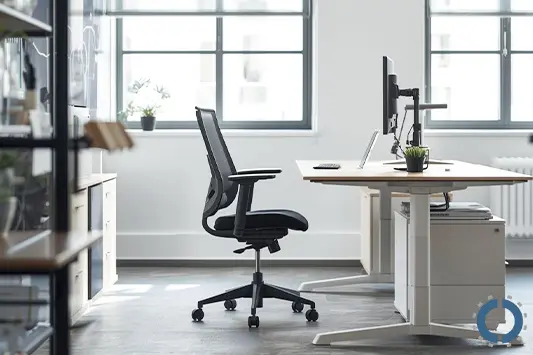 2. Use Ergonomic Furniture to Boost Office Productivity
2. Use Ergonomic Furniture to Boost Office Productivity